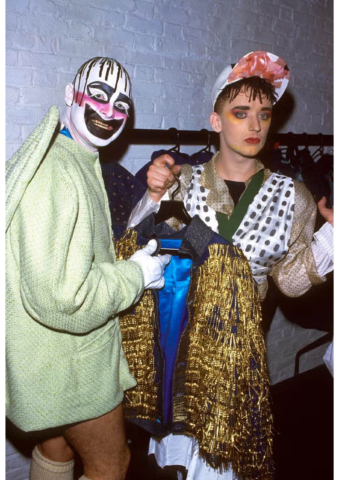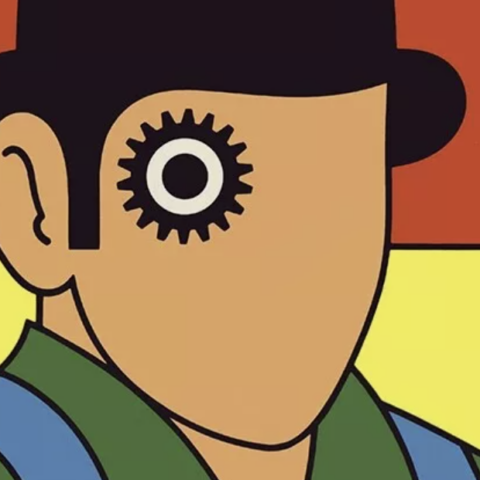The Written Word
By Weronika Kusmider
We all know it…the written word: a form of communication so impactful that it has shaped society, preserved history and provided entertainment, which we may well find via stories and plays. These pieces of literature stay with us, shape our identity. They stay so ingrained in our lives from simple tales to complex fictions. However, sometimes, writing styles and ideas collide and we get more than we expected, a delightful surprise, such as a story within a story, or two styles of writing coming together stylistically hybrid: like letters within a narrative or graphic novel within a novella. In ‘The Written Word’ we explore these stories within stories and these hybrid writing styles.
Article by Lauren Tighe and Weronika Kusmider.
Stories have always been there for us, from the cartoons we may have read as a child, the poems our first love gave to us, or the plays we watch as weekend treats with friends. Our parents used to read us bedtime stories, something so simple, yet powerful enough to put our minds at peace. From something so simple, we moved on in life to more complex stories.
These stories usually are based on four types of narrative writing: linear, where the events of the story are presented in the order in which they actually happened, this can be seen in Pride and Prejudice by Jane Austen; Non-linear, in this instance, the story is not presented in order, with occasional flashbacks and overlaps of actions as seen for example in The Overstory by Richard Powers;
Quest, as the name suggests, is a story where the protagonist (leading character) aims to achieve a goal, just like Bilbo Baggins did in J.R.R. Tolkein’s The Hobbit; Viewpoint is designed to express the points of view or personal experience of the main or other characters in the story, this can be seen in The Girl on the Train by Paula Hawkins.
But what happens if you combine these styles? Below we discuss books that are hybrids of these styles.
Beginnings of hybrid literature.
The Life and Opinions of Tristram Shandy, Gentleman by Laurence Sterne has changed the world of literature. How? The narrative structure of this book did not follow any tradition nor styles. The main character, Tristian Shandy, cannot explain anything simply. He jumps from one event to another, from one story to the other, just to explain one thing. This is the main joke of the novel. To be able to explain his life, he has to digress through many events in a duel, overlapping plot.
Master Thaddeus by Adam Mickiewicz, an 1800s Polish epic poem, is a title you may have not heard before. Written in 12 books, the epic poem covers the story of a Polish family estate in Soplicowo. Each of them talks about different stages of the main character, Tadeusz Soplica’s life. From his return, written as a poem to a big ceremony dinner written like a cookbook. This hybrid of different writing might be a forgotten title, but it is definitely worth a read.
Graphic Novels

Graphic novels are a combination of fiction or non-fiction with comic books. Gareth Brooks takes the graphic novel to a whole new level by including embroidery in his latest book The Dancing Plague, which will be published with SelfMadeHero in the UK on the 29th April. The graphic fiction novel is based on true events that happened in 1518 Strasbourg, when hundreds of people were unexplainably compelled by this unstoppable need to dance. These events still bewilder historians; was it an illness, demonic possession, drug-induced, or a rebellious act? The narrative follows the fictional protagonist Mary, who’s story is intertwined with historical events, guiding us through them from her perspective.

A Contract with God by Will Eisner is a combination of four comic books that, when read, create one graphic novel. It is not a book about religion, it is a rather cynical book showing a journey of a father that just lost his daughter. It was a groundbreaking book as it showed people that comics are not just fun and for kids. This book and its narrative focus on the daily struggles of people from Brooklyn and how they lost or found their faith.
The Savage by David Almond is a descriptive and graphic novel that holds a story within its story. The plot follows the boy ‘Blue’ who has recently lost his father and is, of course, stricken with grief. As a coping mechanism, Blue begins to write a comic book story about a wild boy living in the woods. This wild ‘Savage’ boy is so well described and drawn by Blue, that it comes to life in the real world. The novel consists of drawing and a descriptive narrative, which has now been adapted into a play.
Diary of a Wimpy Kid can also be considered a graphic novel. The book series is by cartoonist and writer Jeff Kinney, who writes in the epistolary form in combination with narrative. The reader understands the internal thoughts of the protagonist, ‘Greg’, (a little boy attending school) through the context of journal entries, and ‘Greg’s drawings (cartoons, hence graphic novel). This is mixed with narrative helping the reader form the bigger picture of Greg’s day-to-day life as he attempts to become popular at school.
Narrative and Epistolary
Narrative means the art of telling a story, usually with a beginning, middle, and end. Epistolary includes letters, diary/journal entries within the literature to enable the reader to have a deeper understanding of the character’s thoughts and feelings throughout the story. As mentioned above, ‘Diary of A Wimpy Kid’ uses epistolary with narrative, as well as being a graphic novel.
The Perks of Being a Wallflower by Stephen Chbosky is written as both narrative and epistolary. The book starts and ends with letters to an anonymous ‘dear friend’ which Chbosky said was inspired by his own anonymously written letters to Stewart Stern who later mentored him. The novel is a coming-of-age story following protagonist Charlie and his new group of friends. Charlie’s last letter (the last page of the book) directly addresses the reader or ‘dear friend’ thanking them for their help and company, and talking about feeling alive in this moment:
“And know these will all be stories someday
and our pictures will become old photographs
and we’ll all become somebody’s mom or dad.
But right now these moments are not stories….And in this moment, I swear, we are infinite”.
Oscar Wilde: A Life in Letters by Merlin Holland explains the life of Oscar Wilde in letters, with an explanation of his life by the author. Merlin Holland, the only grandchild of Oscar Wilde, spent most of his time collecting his grandad’s letters to create his biography and bring light to Wilde’s eerie personality.
The Wall by Peter Sís, couples period photography, journal entries, blocks of print and historical context. This hybrid of photos and writing shows the true story of growing up in communist Czechoslovakia. His Cold World childhood story has been powerfully expressed thanks to the combination of different narratives and art movements.
A Play within a Play
Midsummer Night’s Dream by William Shakespeare takes the formation of being a play within a play. The framing play follows four Athenians, two men, and two women. Lysander and Demetrius are both in love with Hermia, who only loves Lysander, Helena loves Demetrius. The situation is made more complicated when a fairy uses magic to try and make Demetrius love Helena back, but he uses magic on the wrong guy, making Lysander fall in love with Helena. There are so many partner swaps and squabbles that saying it’s a love triangle would be an understatement, and it could almost be seen as a historical version of Love Island.
Meanwhile, the ruler, Theseus is marrying Hippolyta and some of the labourers get together to form a play to perform at Theseus’s wedding (the play within the play). They perform the play but it turns out to be an incredibly ridiculous performance.
The Caucasian Chalk Circle by Bertolt Brecht is also a play within a play. The frame play is set within the Soviet Union around the end of the Second World War. There is a dispute between two communes over who holds claim to the lands after the Nazis retreated. One of the communes organises a play based on old folklore to be performed to help shed light on the situation and empathise with one another. Brecht utilises the placement of the singer (the key performer in the play within the play) to switch between and interlink both of the stories and timelines.
‘The Written Word’ is such a magical thing, even the way, style, or structure of literature can make a story completely different. The hybrid of writing styles such as epistolary and narrative can provide a deeper insight into characters. The use of drawing and comics or graphics can help bring a story to life. Having a story within a story makes it all the more exciting and unpredictable, there is never a dull moment when you witness a brilliant play or have your nose in a well-written book. Literature touches our lives in ways we may not even realize.
If you enjoyed ‘The Written Word’ you might also enjoy reading Bowie; The Chameleon of Pop Here.
To find out more about Gareth Brooks’ The Dancing Plague and the publisher SelfMadeHero, click Here. To find out more about The Savage by David Almond click Here. To find out more about the book series Diary of a Wimpy Kid by Jeff Kinney click Here. To explore The Perks of Being a Wallflower by Stephen Chbosky click Here.





